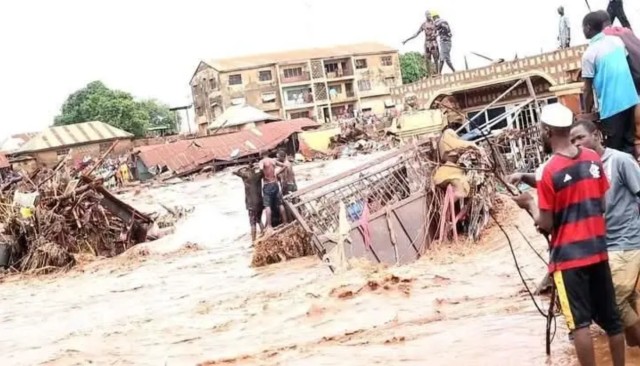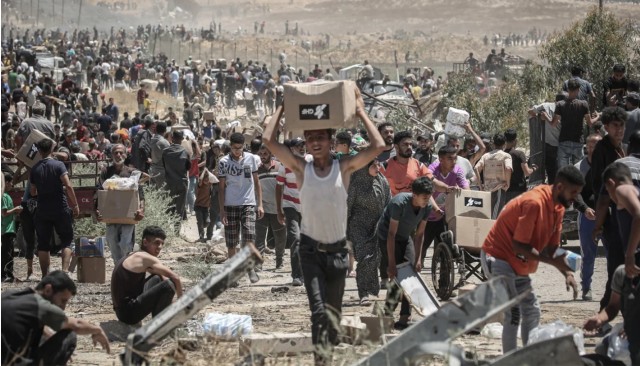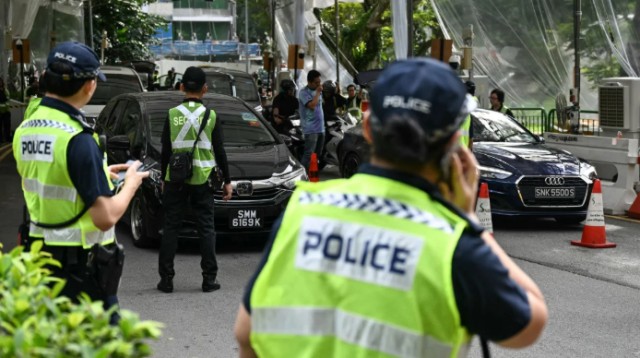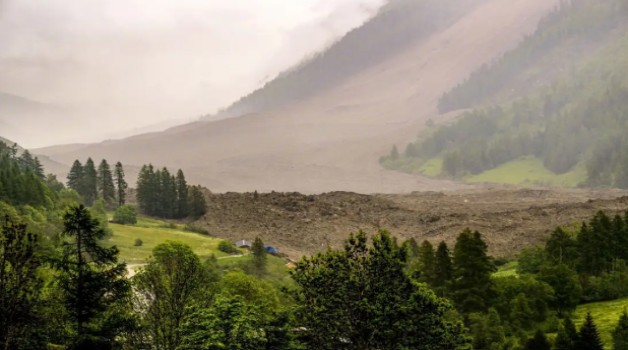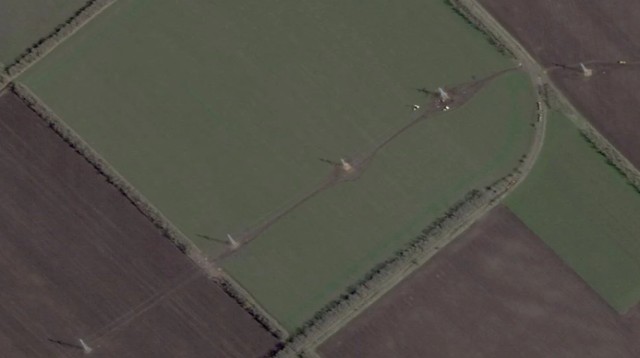
This satellite photo from Planet Labs PBC shows Russian workers building pylons for electrical transmission lines in occupied territory just west of Mariupol, Ukraine, April 15, 2025. (Planet Labs PBC via AP)
Russia does not appear to be preparing for an immediate restart of the Zaporizhzhia nuclear power plant, according to a senior official from the International Atomic Energy Agency (IAEA). This statement comes after environmental group Greenpeace raised alarms over Russia’s recent construction of power lines near the facility.
The Zaporizhzhia plant, located in southeastern Ukraine, is the largest nuclear power station in Europe. Since Russia seized control of the plant in early 2022, the facility has remained offline. Despite this, it continues to attract international scrutiny due to its size, strategic importance, and potential risks amid the ongoing war.
Greenpeace Raises Red Flags Over Power Line Construction
Greenpeace recently published satellite images suggesting Russia is building a high-voltage power line in Russian-occupied areas of Ukraine’s Donetsk and Zaporizhzhia regions. The Associated Press analyzed similar satellite images, confirming visible construction activity around the facility.
Shaun Burnie, a nuclear expert at Greenpeace Ukraine, described the findings as “hard evidence” of Moscow’s efforts to reactivate the plant. He called the project both dangerous and illegal, warning of the nuclear safety threats involved.
IAEA Finds No Restart Signs Yet
In response to Greenpeace’s claims, the IAEA clarified its position. A senior agency official stated that on-site inspectors have not observed any significant developments suggesting preparations for a restart.
“Our teams continue to confirm there is no indication of an imminent restart,” said the official, speaking anonymously due to the sensitive nature of the information.
The IAEA has maintained a continuous presence at the plant, rotating experts to monitor safety conditions. The agency emphasizes that any decision to resume operations must be treated with extreme caution, especially in wartime conditions.
Ukraine Condemns Power Line Construction
Ukraine formally raised concerns about the power line project in a letter to the IAEA and its member states. The letter condemns Russia’s actions as a violation of international law and Ukraine’s sovereignty.
Kyiv insists that any operation of the Zaporizhzhia plant without the explicit approval of Ukraine’s nuclear regulatory authority is illegal and endangers nuclear safety.
“These actions clearly reflect Russia’s intent to initiate an unauthorized restart,” Ukraine stated. The letter adds that such moves “pose a direct and unacceptable threat to nuclear safety.”
Water Supply Crisis Adds to Safety Concerns
Further complicating a potential restart is the 2023 collapse of the Kakhovka Dam. The dam had provided cooling water to the Zaporizhzhia plant. Its destruction forced staff to dig wells to access alternative water sources.
“The plant’s main cooling system can no longer operate as designed,” said the IAEA official. He added that the plant’s water needs would increase significantly if it were to return to active operation, making a restart far more complex and dangerous.
Nuclear Plant Still Holds Global Attention
IAEA Director-General Rafael Mariano Grossi confirmed that discussions about the plant’s future are ongoing. He may address the issue during his next visit to Ukraine, and possibly to Russia.
Grossi emphasized that any consideration to reactivate the plant “requires very careful consideration,” given the technical challenges and geopolitical tensions.
Meanwhile, U.S. President Donald Trump has also brought the Zaporizhzhia plant into peace talks. In March, he reportedly discussed its future with Ukrainian President Volodymyr Zelenskyy, suggesting that the United States could play a role in restoring it.
Conclusion
For now, the Zaporizhzhia nuclear plant remains in a cold shutdown state. While recent developments have sparked concern, there is no immediate evidence of Russia moving to restart operations. Still, the situation remains fluid, and the world continues to watch closely. The plant’s future lies at the heart of broader energy, safety, and sovereignty debates amid a war with no clear end in sight.


